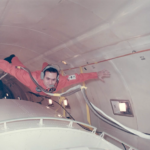Space Awareness
10 Things You Need to Know About the Leonid Meteor Shower
Written by: developer
The Leonid meteor shower is coming up in November, and here are a few facts you should know about this annual meteor shower.
- The Leonid meteor shower is named for the star constellation Leo, which is where the meteors appear to come from. The meteors will appear to originate from Leo the Lion’s mane.
- While the meteors will appear to radiate from the Leo constellation, viewers can spot the meteors in all parts of the sky.
- The peak of the Leonid meteor shower will be Friday, Nov. 17. (Sounds like a great date night idea!)
- The Moon will be in a new phase, making viewing conditions excellent, subject to your local weather conditions.
- People in both the Northern and Southern Hemisphere’s should be able to see the Leonids, although viewers in the North will have a slightly better show.
- The Leonids originate from Earth passing the orbital debris path of Comet Tempel-Tuttle’s tail.
- Most meteors are as small as a grain of sand or the size of a pea, so they burn up before hitting the Earth’s surface.
- Larger pieces that do not burn up and hit the Earth’s surface are referred to as meteorites, instead of meteors. Experts do not expect any meteorites from this shower.
- Spectators can expect about 10 to 20 meteors an hour.
- The best time to spot the meteors is after midnight in a dark location. Consider visiting a local state or national park to avoid city light pollution.
This article is part of Space Watch: November 2017 (Volume: 16, Issue: 11).


